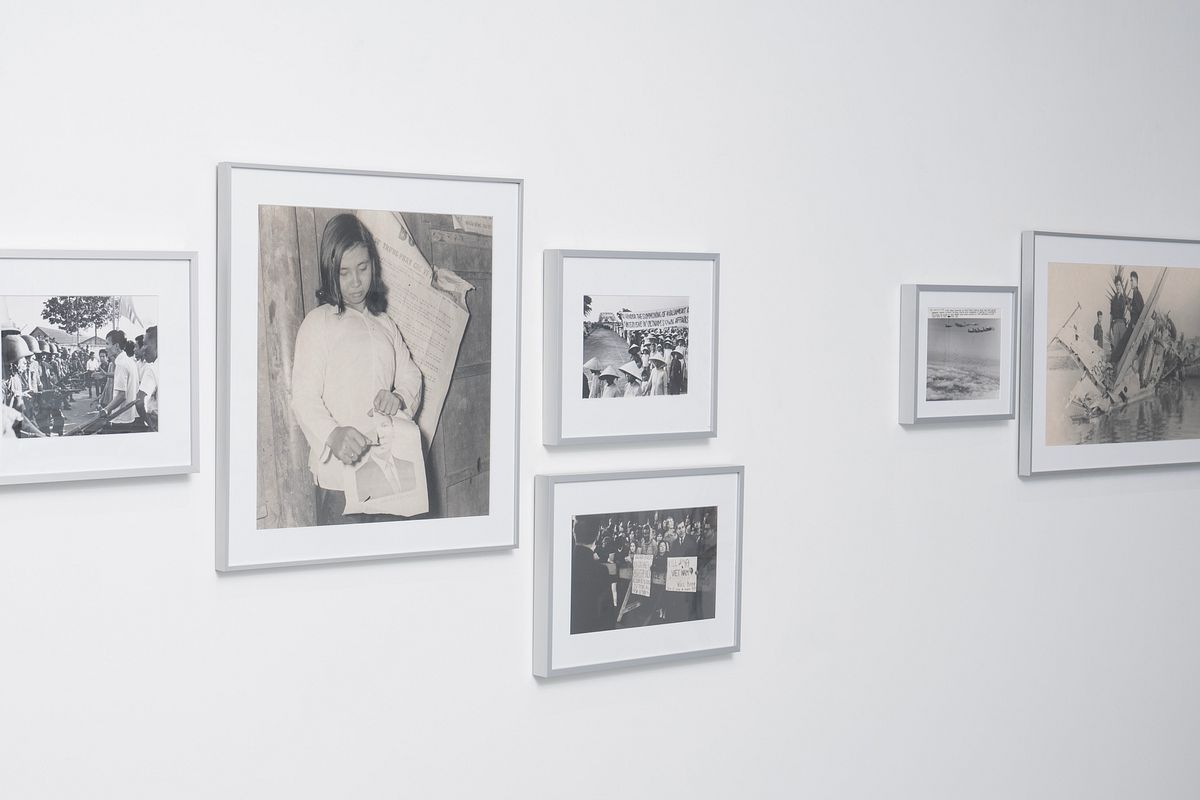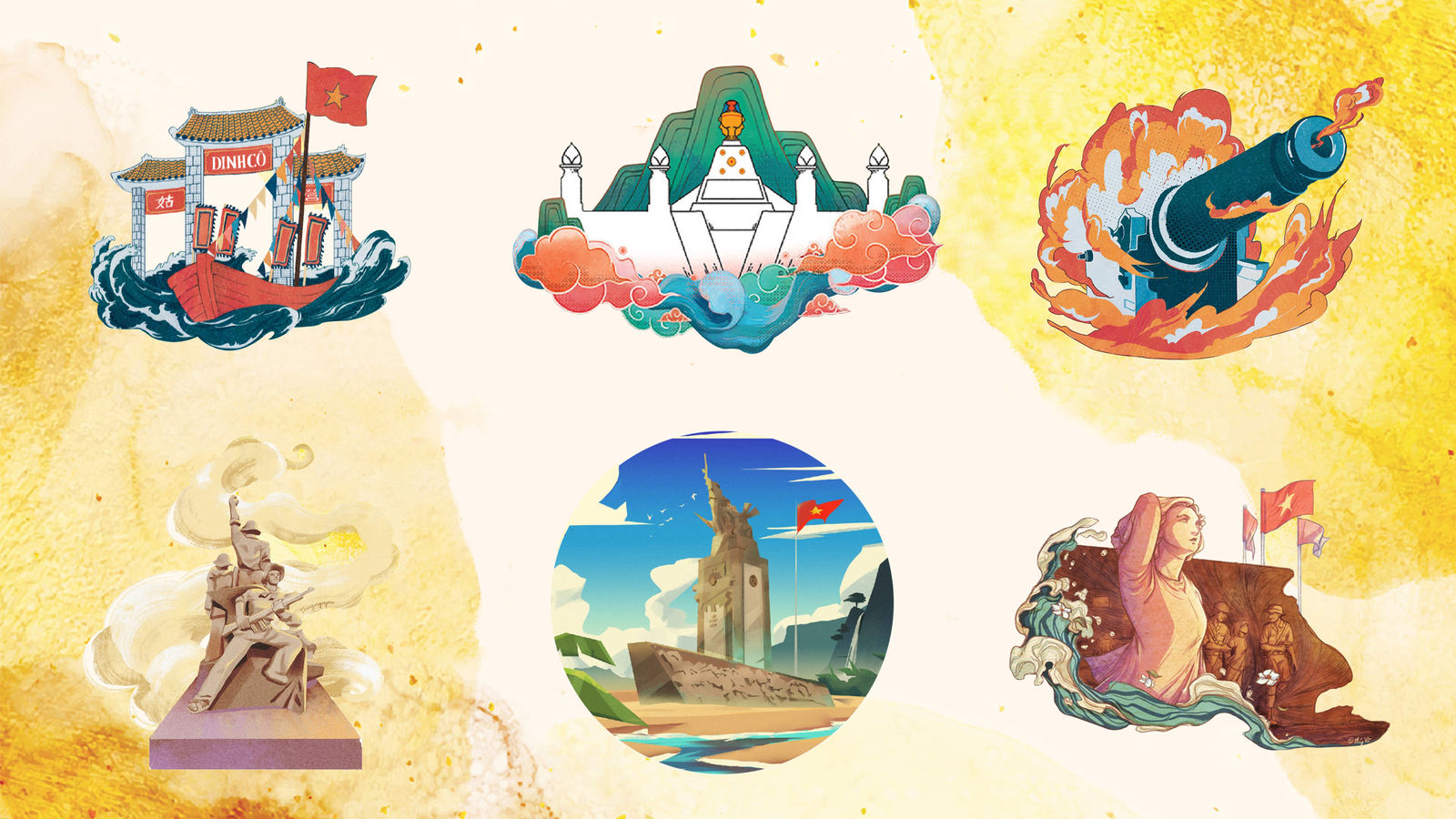War photographs, often viewed as windows into the past tragedies, are believed to offer an immediate representation of reality. But what lies beyond the frame? What purpose did these images serve, and who were they meant for?
Most of us, especially those who grew up in Vietnam, at some point, have encountered countless black-and-white photographs and video footage of the American War — intense battlefields and the sounds of explosions broadcast through historical movies and documentaries. Although the war ended decades ago, these images still carry a powerful impact and somehow continue to haunt our minds today. For some, images of war can trigger emotional responses and become overwhelming. It can be difficult to remain conscious enough to comprehend and engage on a deeper level with the context beyond the frame. In those moments, the surrounding histories seem to fade, as if only the “truth” presented in front of us is what matters.
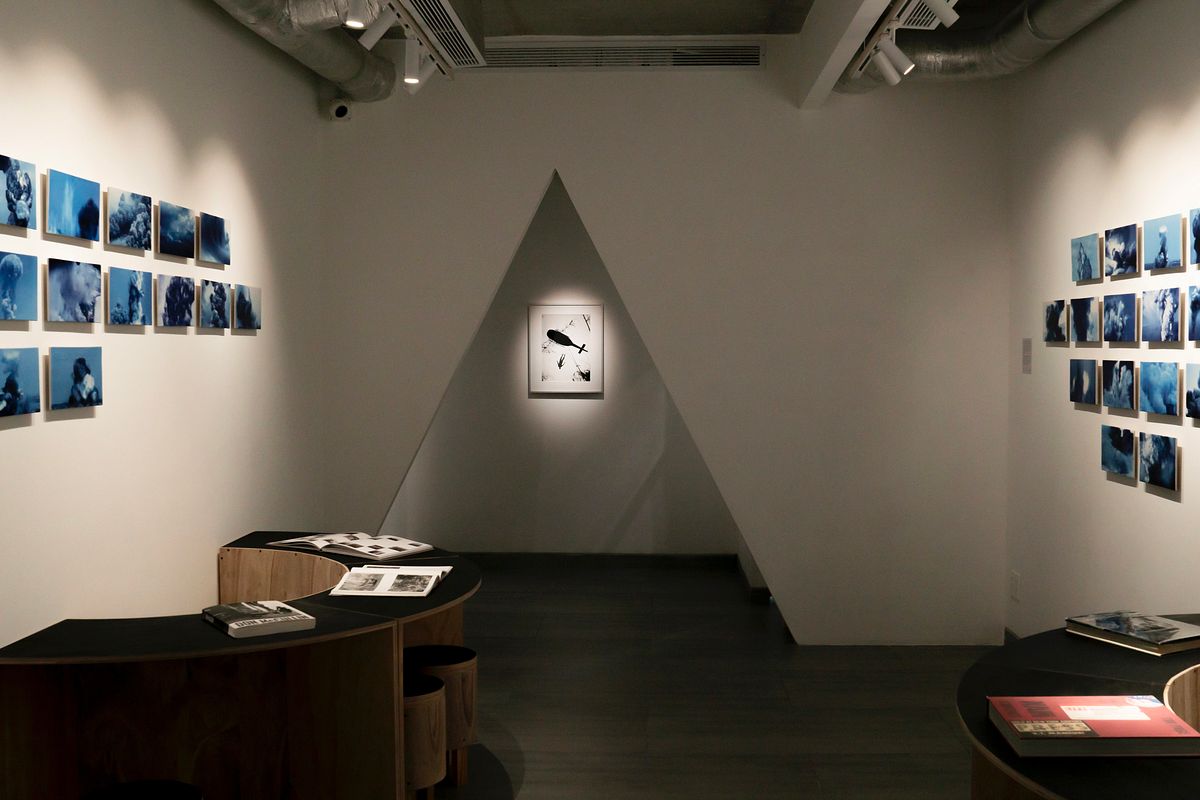
Installation view of ‘A Radial System’ at Dogma Collection.
Dogma Collection’s latest exhibition, “A Radial System,” brings together a series of photographs taken during the American War by foreign and Vietnamese journalists in the 1960s and 1970s, highlighting how photojournalists from both sides captured scenes of the battlefields, and how the images were deployed and circulated by the media, and consumed by the public at the time. Placed in dialogues with the historical photographs are works by contemporary artists Nguyễn Trinh Thi, Nguyễn Phương Linh and An-My Lê, from the collection of Nguyen Art Foundation. The exhibition offers the audience another perspective of how such images are consumed in today’s mass media, often shaped by particular agendas, and how we position ourselves when viewing and reinterpreting these images in the present day. The exhibition was held in partnership with the “Sensing Photography: Vietnam & Vectors of Global Histories” symposium (February 21–28, 2025), organized by Trâm Lương (Fulbright University Vietnam) and Jacqueline Hoàng Nguyễn (Konstfack & KTH Royal Institute of Technology).
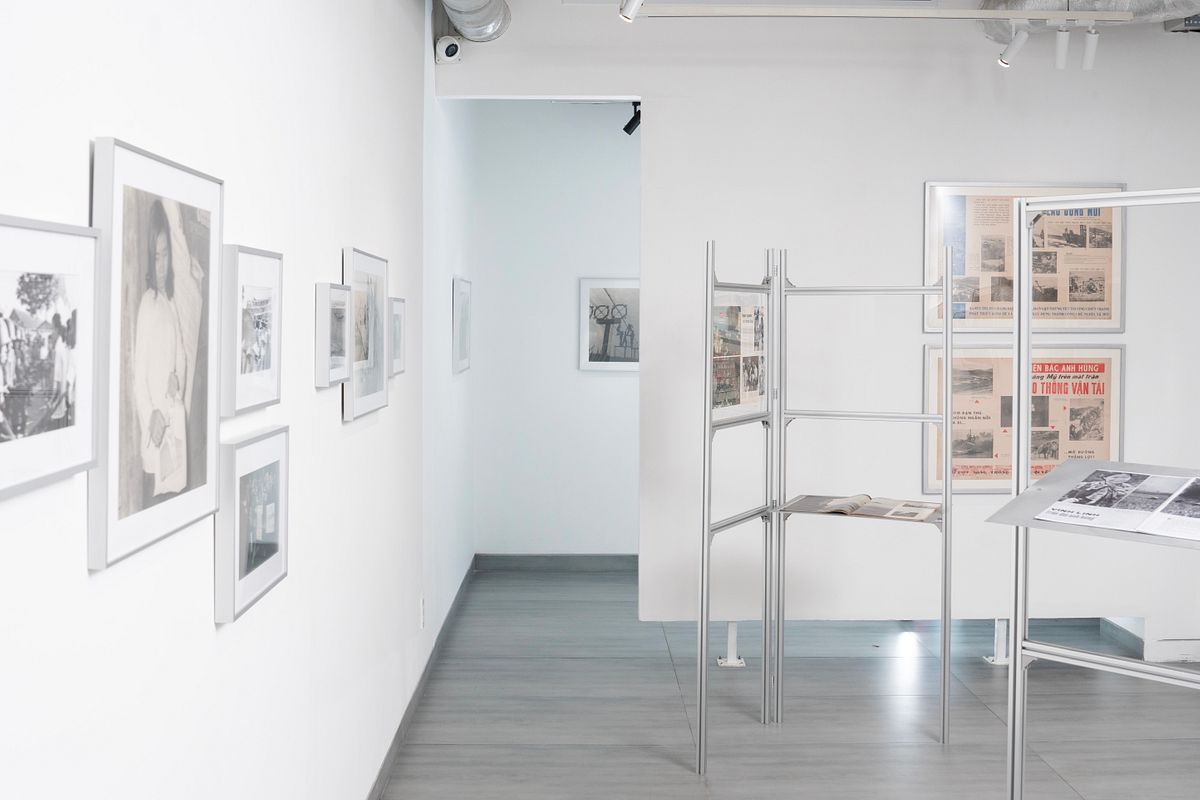
Installation view of ‘A Radial System’ at Dogma Collection.
The exhibition title takes art critic John Berger’s essay ‘Uses of Photography’ as a point of departure. In his essay, Berger challenges the notion of photography as a linear medium that simply captures a moment or presents a single argument. He argues that photographs should reflect how memory works — radially. In other words, an image should be perceived and considered from personal, political, economic, dramatic, everyday, and historic perspectives. In the curatorial text, curator Minh Nguyễn states: “One approach is to present them (the images) ‘radially,’ alongside juxtaposing images and by opposing viewpoints, to break through their familiarity.” Throughout the exhibitions, photographs taken by western journalists are placed next to those by Vietnamese journalists, offering the audience the contrasting approaches in terms of composition, the vantage point of where the photos were taken, and how the photographs capture and portray human experience on battlefields.
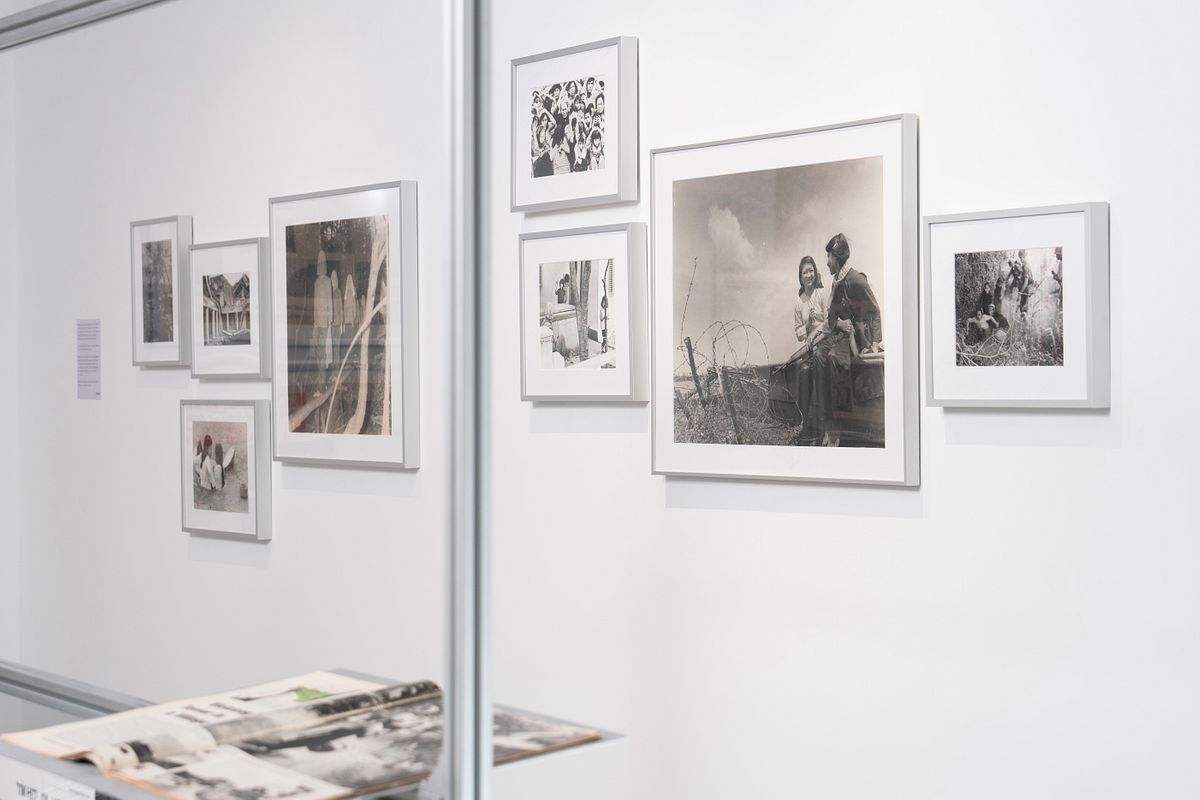
Installation view of ‘A Radial System’ at Dogma Collection.
Photos taken by foreign and western journalists predominantly focused on American soldiers in action on the battlefield, also capturing their facial expressions of fear and exhaustion. When Vietnamese soldiers and ordinary civilians appeared in the frame, their images were frequently dehumanized, shown as victims of war or defeated figures, with an emphasis on suffering and devastation. These photographs were typically taken on the American side of the battlefield and centering on US military operations, including ground-level combat scenes, bombing raids, soldiers parachuting from helicopters, aerial views of towns and battlefields shot from aircrafts.
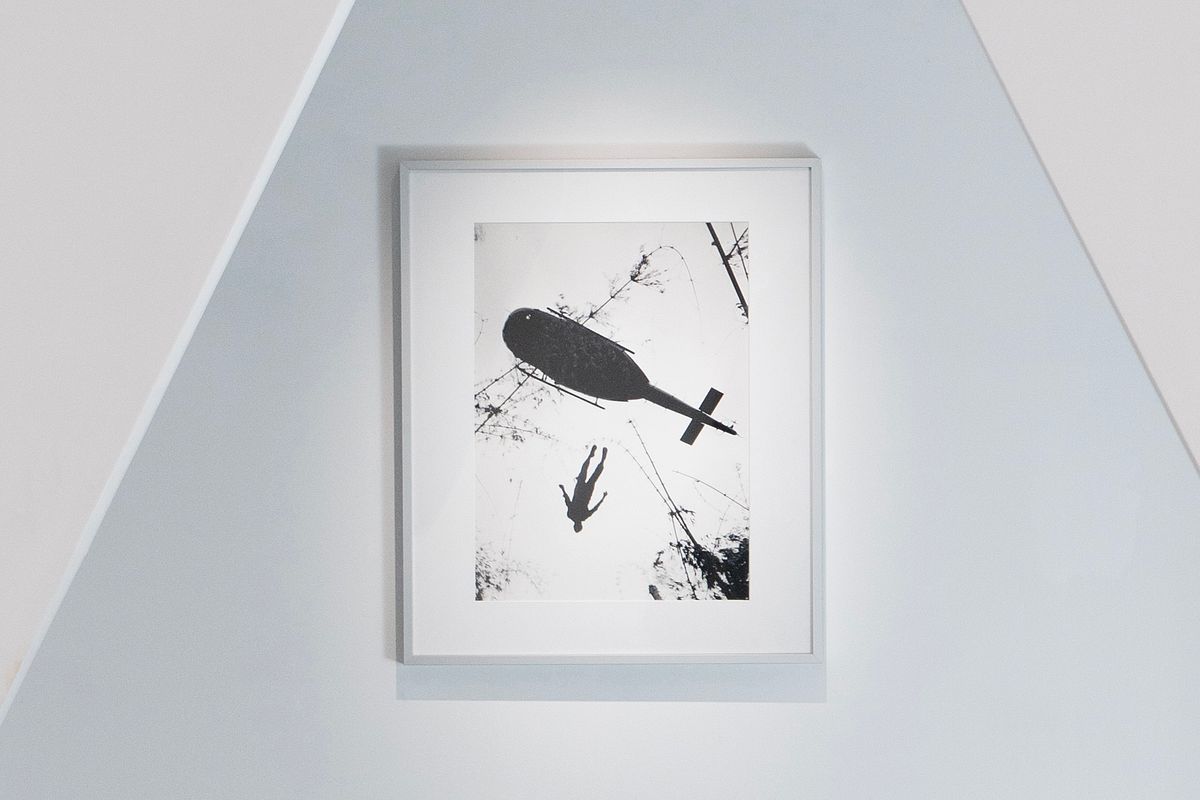
Henri Huet (1927–1971). ‘US Paratrooper, War Zone D’. May 14, 1966.

Installation view of ‘A Radial System’ at Dogma Collection.
In contrast, photographs taken by Vietnamese first-generation photojournalists — most of whom were employed by the state-run Vietnam News Agency (VNA) — offered a completely different visual narrative. These images focused on the daily lives of soldiers and ordinary people, presenting a more humanizing and intimate portrayal of life during wartime, while also promoting the beauty and vision of a socialist revolution. They conveyed a strong sense of community, resilience, and solidarity, highlighting the strength and spirit of people supporting one another through hardship, with an unwavering belief in eventual victory. The photographs featured in this exhibition were captured close to the ground, depicting deep forest camps, makeshift battlefield hospitals, rural villages, trucks traveling along the Hồ Chí Minh Trail, and moments of enemy aircraft being shot down.
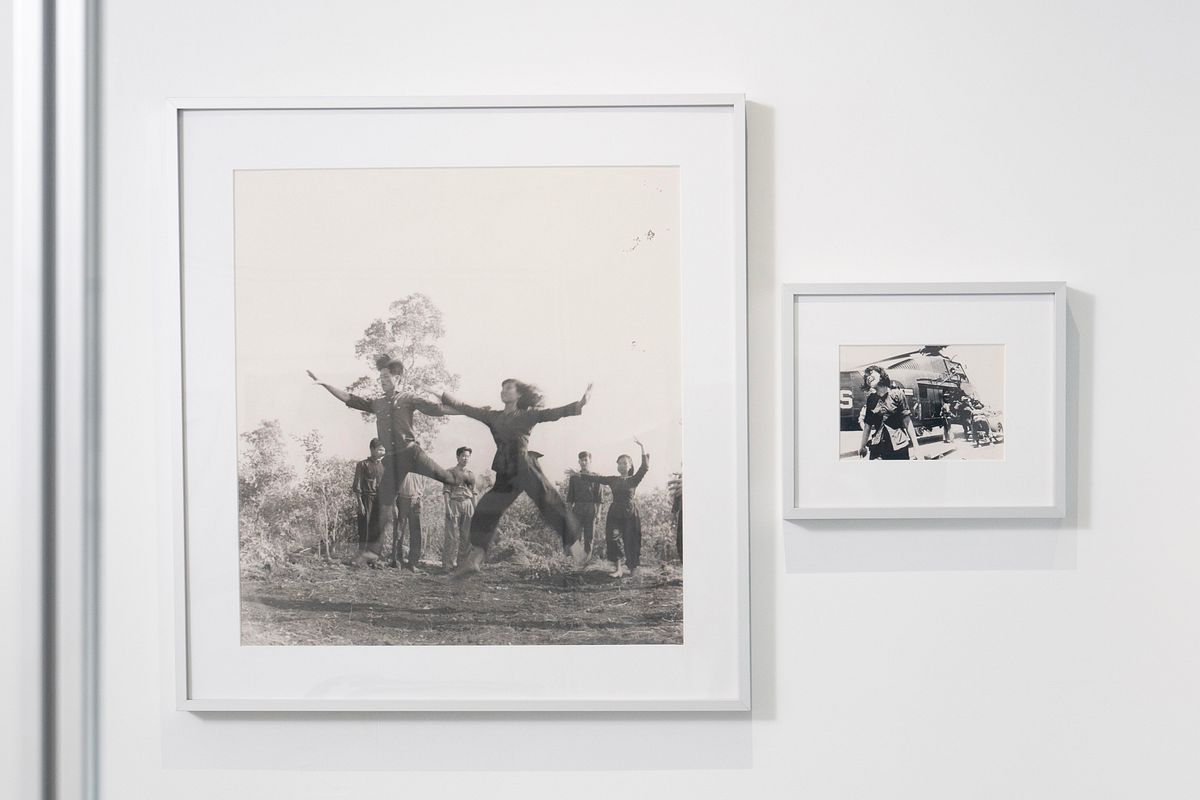
Left: Võ An Khánh (1936–2023). ‘A performing arts class held by the Propaganda Department of the Southwest Region in the midst of U Minh Forest during enemy’s attacks’ (1971).
Right: Tim Page (1944–2022). ‘Widow and KIA husband evacuated to Quang Ngai airstrip’ (April 1965).
Unlike western photojournalists, who had access to high-quality cameras, high-speed films suited for low-light conditions, and the freedom to move in and out of war zones, Vietnamese photojournalists received limited technical training in analog photography and were often separated from their families for years while both reporting and supporting military operations. Developing their images involved long, dangerous journeys under the constant threat of airstrikes, with photo processing carried out in makeshift darkrooms set up in air-raid shelters. Meanwhile, large amounts of battlefield photographs and footage captured by western photojournalists were transported daily to professional labs via commercial flights.

Installation view of ‘A Radial System’ at Dogma Collection.
The differences in technical resources and political agenda on each side explain the contrasting approaches to newspaper headlines and the images circulated by respective news outlets. As showcased in the exhibition, while images of graphic violence and destruction were widely circulated in magazines such as LIFE, with headlines like “Saigon: Explosion by a Brazen Enemy” portraying the soldiers and civilians’ struggle against terrorist attacks, photographs published in Vietnamese news bulletins — such as those by the Central Workshop for Propaganda — were accompanied by headlines like “New Spirit of Construction” or “The Heroic North Defeating the US on the Transportation Front,” emphasising resilience and the will towards victory.


Nguyễn Trinh Thi. ‘Landscape Series #1’ (2013). Collection of Nguyen Art Foundation.
Works by Nguyễn Trinh Thi, Nguyễn Phương Linh and An-My Lê were set in dialogue with the war photographs throughout the exhibition, supporting the curatorial narrative and bridging the past and present. In ‘Landscape Series’ (2013), Nguyễn Trinh Thi recontextualizes photographs from online Vietnamese newspapers, each depicting a person pointing at something from a past event, a location, or something that is missing. Nguyễn Phương Linh’s ‘Sanctified Cloud’ (2013) evokes a multi-channel newsroom setup, with soft, blue, and cloud-like ethereal forms — which in fact, are photographs of bomb explosions. By detaching the original photographs and removing context from their original narratives, the works demonstrate how visual information can be manipulated to serve specific agendas, and how mass media can transform destruction and violence into abstraction, which is then consumed by the public. Towards the end of the exhibition, An-My Lê’s large-format black-and-white photographs ‘Tiger Cage’ — from “Small Wars” series (1999–2002) — document the staged performances by war re-enactment hobbyists in the forest of the American South. Resembling the nature of war photography, her works raise the questions regarding the purpose of war reenactment, whether it “represents morbid fascination or serves as catharsis, a way to process traumatic history.”
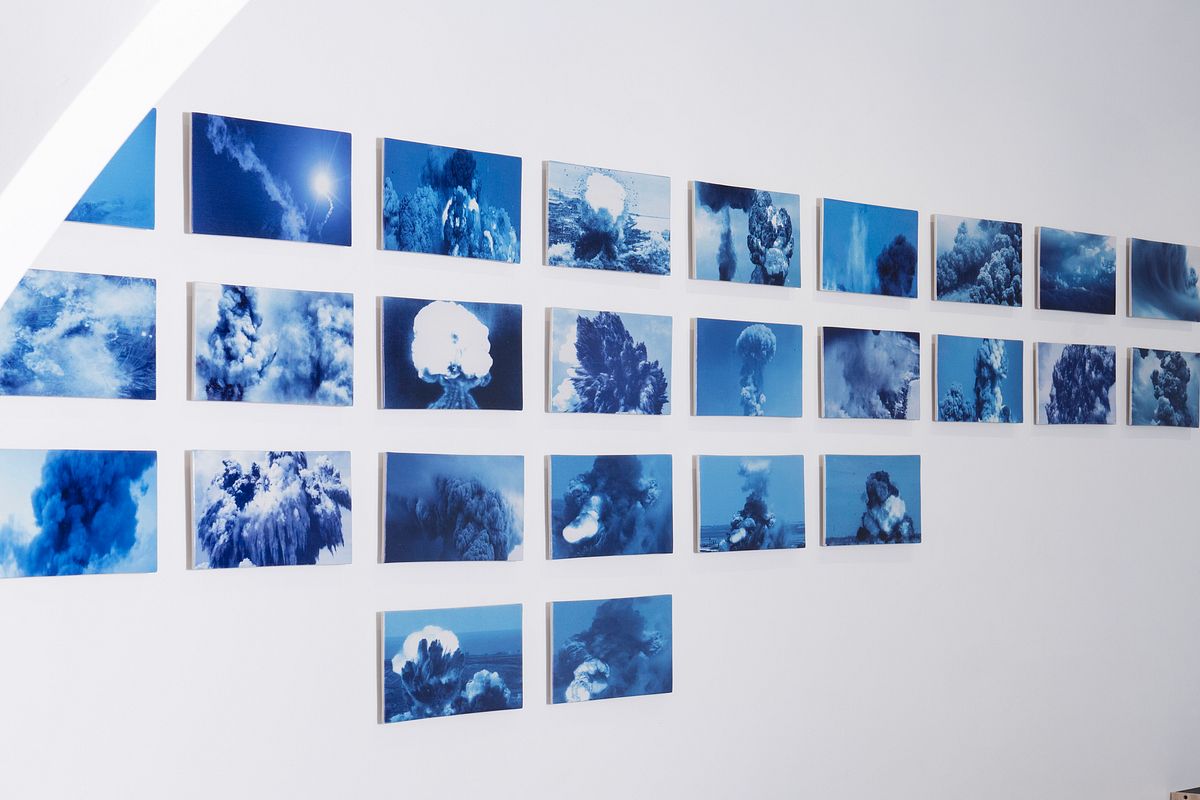
Nguyễn Phương Linh. ‘Sanctified Cloud’ (2013). 195 UV-digital print on handmade ceramic sheets. Collection of Nguyen Art Foundation.
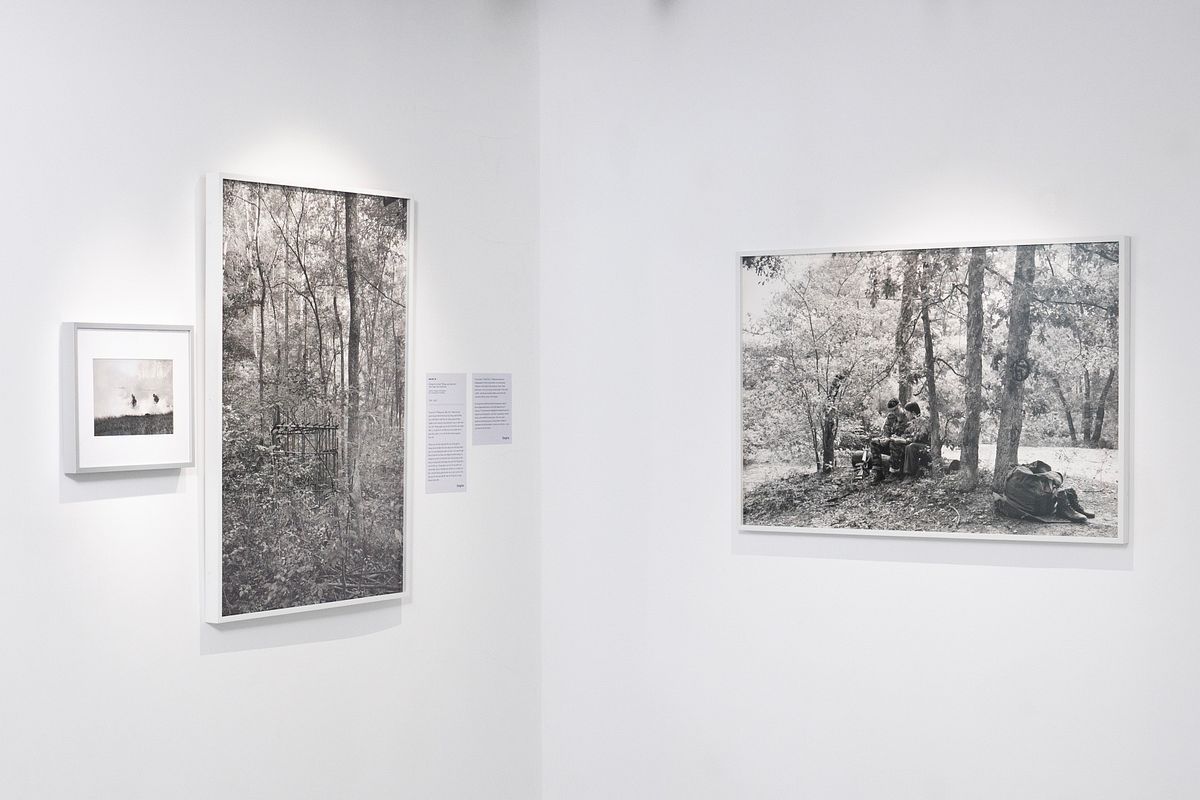
An-My Lê. ‘Tiger Cage’, from Small Wars (1999 - 2002). Collection of Nguyen Art Foundation.
This April marks the 50th anniversary of Vietnam’s Reunification Day (April 30, 1975). Across the city center, roads are being closed and stages are built in front of Dinh Độc Lập (the Independence Palace), making way for parades and preparations for this historic national celebration. Against this backdrop, and in alignment with this significant milestone, the exhibition reflects on how our country has been shaped and deeply defined by a long history of turbulence, warfare, and revolutions spanning centuries, where countless lives were sacrificed for the peaceful time we experience today.
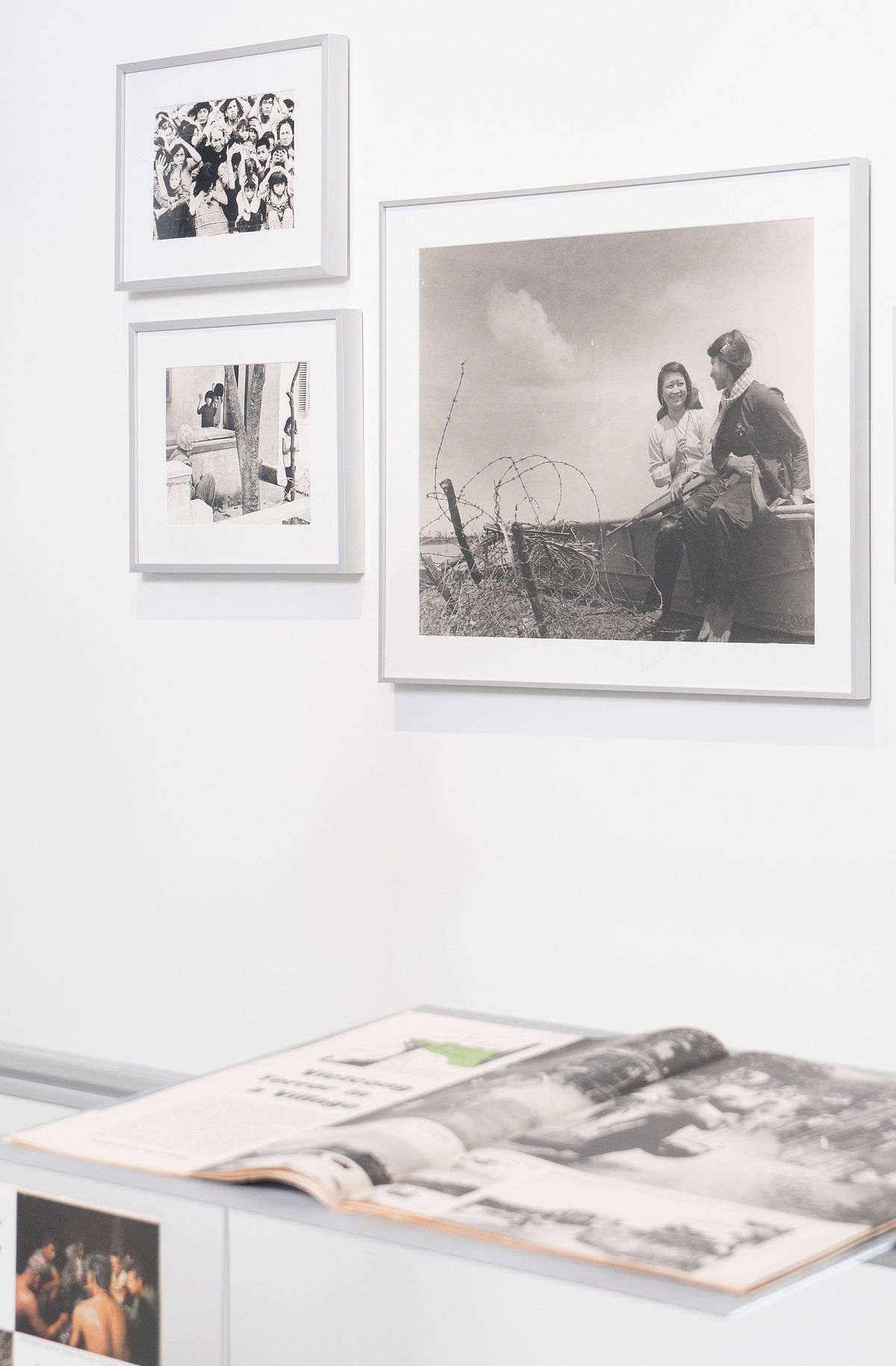
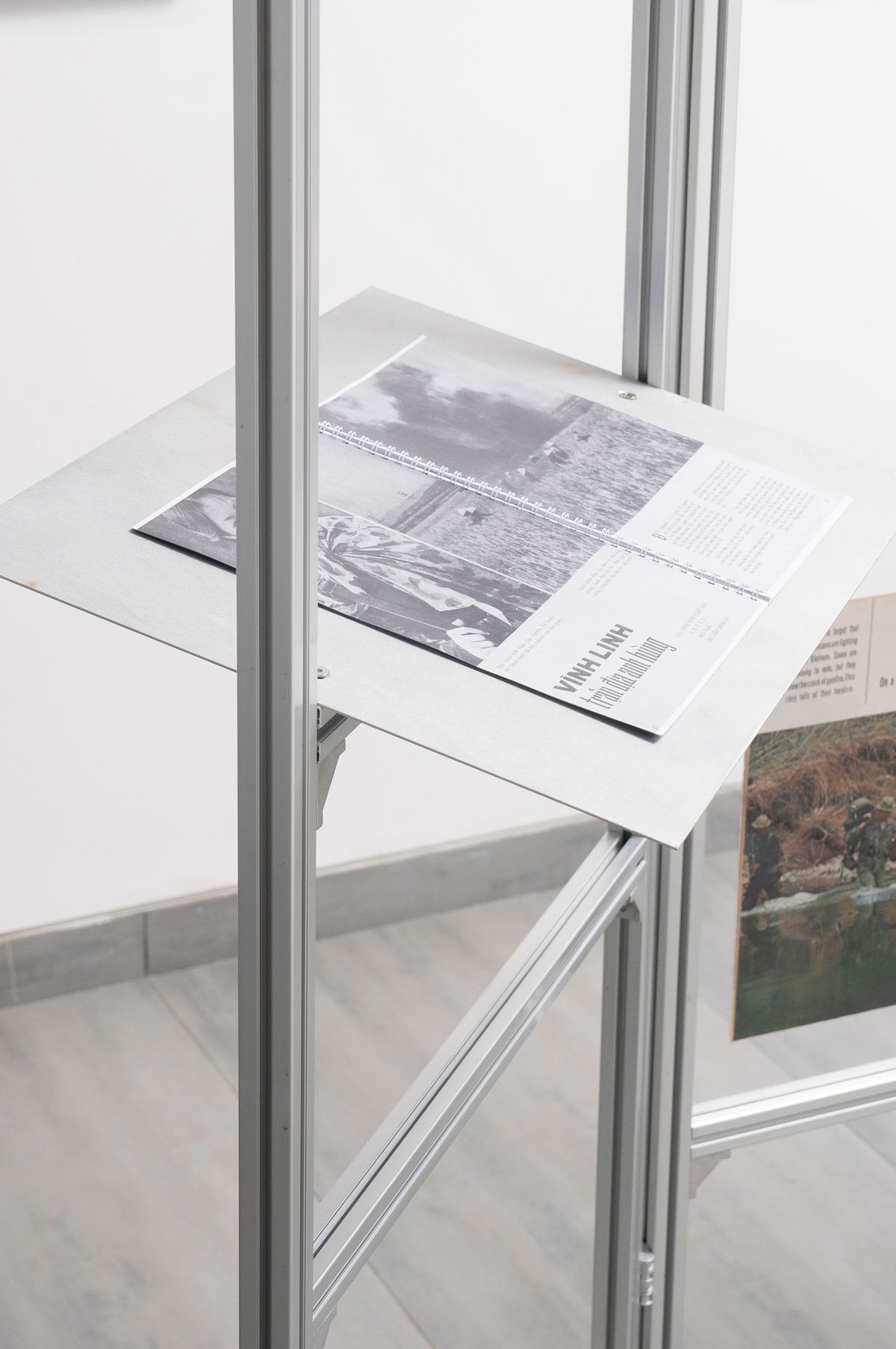
Installation view of ‘A Radial System’ at Dogma Collection.
Yet, the exhibition is not about war photographs themselves, but about questioning the real purpose of real-time photography through “battlefield lenses.” In a world where history seems to echo through contemporary conflicts — and where those images are rapidly circulated on digital platforms today — these historical war photographs continue to hold a dialogue between the past, present and future, shaping our collective memory, national identity and ways of seeing. Perhaps, at this moment, it becomes more important to ask ourselves: how do we remember, what do we choose to remember, and how do we move forward from here?
Photos by Dương Gia Hiếu courtesy of Dogma Collection.
“A Radial System” is now on view at Dogma Collection until June 12, 2025. More exhibition info can be found on the website and Facebook page.

